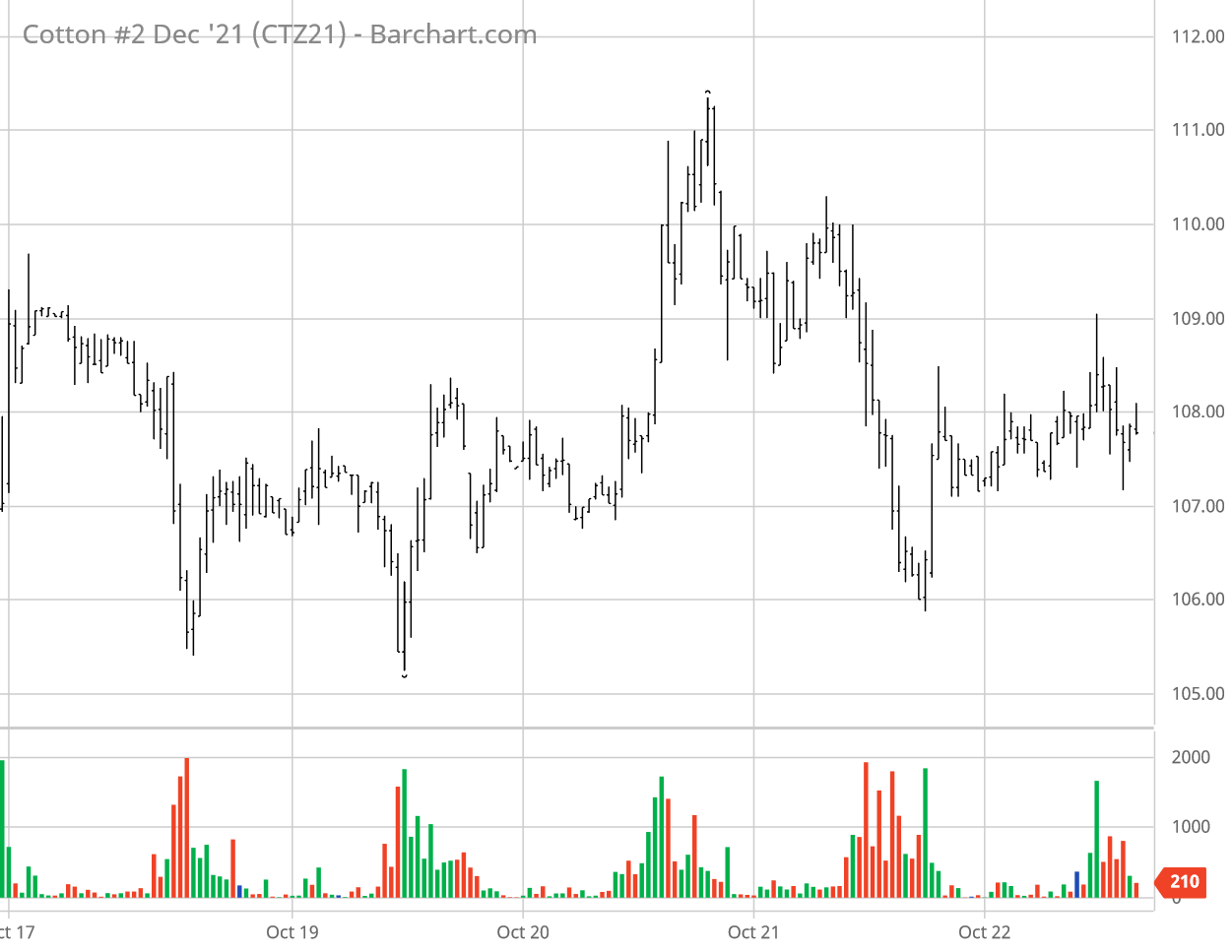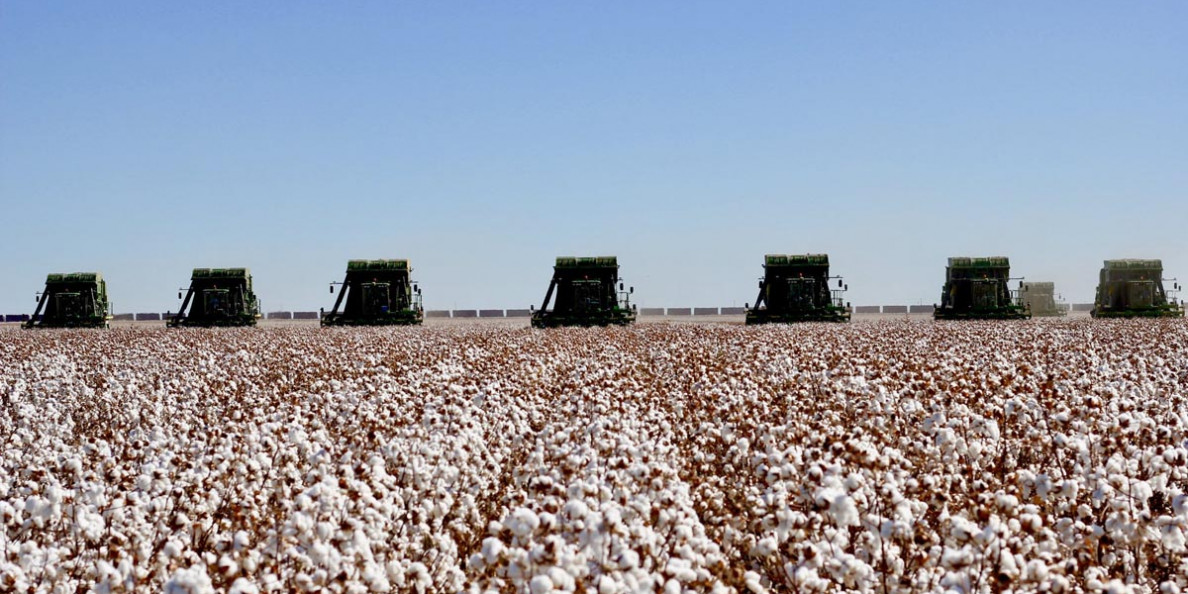For the week ending Friday, October 22, Dec’21 ICE cotton futures gyrated in a sideways pattern, with Thursday seeing the widest swing (see chart above courtesy of Barchart.com). Friday’s settlement of the Dec’21 was 108.26 cents per pound. The level of ICE cotton futures open interest fluctuated in a static pattern across the week, indicating no clear trading pattern. Three weeks ago the daily increases in hedge fund long open interest was large, e.g., four or five thousand contracts per day. In contrast, the daily adjustments in open interest last week and this week were more like one or two thousand contracts. So it continues to look like the battle lines remain drawn between spec longs (looking to eventually take profits) and commercial shorts (looking to fix on-call contracts at the lowest price possible). The regular Tuesday snapshot (through October 19) showed long liquidation of ICE cotton futures with 8,900 fewer hedge fund longs, week over week. There was negligible increase in the number of hedge fund shorts or index fund longs, week over week.

Chinese cotton futures continued their fluctuation above $1.50 per pound, while world prices trended higher this week. There were mixed weekly futures price patterns for corn (uptrending), soybeans (mixed), and hard red winter wheat (flat). U.S. stock markets were mostly higher across the week, while the U.S. dollar index weakened and then traded sideways.
Cotton-specific fundamental factors this week included stronger weekly U.S. cotton export sales, continuing good U.S. cotton condition ratings, and mostly good weather for cotton maturation/harvest. U.S. cotton certified stock levels continued to erode after peaking in late June.
To the extent that the current rally was speculatively fueled, it could unfold unpredictably and dramatically. Speculative buying can be influenced by animal spirits, risk on/off developments, and other effects that have little to do with ag market fundamentals. Having said that, the cotton fundamentals remain bullish, with the high internal cotton prices in China, combined with the inventory replacement policy of their reserve, continues to stimulate large U.S. export sales to China. It’s not 2010/11 all over again, but it kinda looks like 2012 and 2013.
The movement of ICE cotton futures has implications for potential hedging strategies. The price volatility in 2021 is a reminder why it is risky to hedge by selling futures, and it’s also made some option premiums more expensive. As new crop Jul’22 cotton futures risen in the last few months, a near-the-money 85 call option has increased in value. Between September 23 and October 14, an 85 call option on July’22 rose from 9.45 cents to 19.99 cents per pound. Had it been purchased in the previous months (i.e., back when some new crop was being cash contracted in the mid-80s), the current uptrend clearly illustrates the insurance aspect of call options. In general, a call option represents upside price risk protection, in combination with cash contracting or selling futures. Looking further out, the rising new crop Dec’22 futures contract has resulted in an out-of-the-money 80 cent put option premium declining from fourteen cents in January to 4,49 cents per pound by October 14. If Dec’22 futures keep rising, this and similar put options will become increasing affordable down-side price insurance. That is, once purchased, it will buffer unexpected declines in Dec’22 futures by increasing in value.
For more details and data on Old Crop and New Crop fundamentals, plus other near term influences, follow these links (or the drop-down menus above) to those sub-pages.


